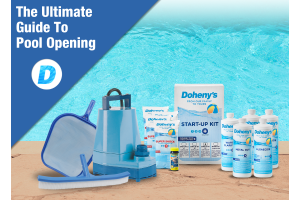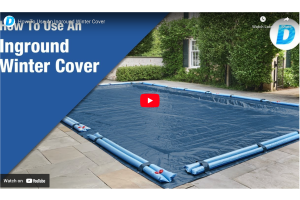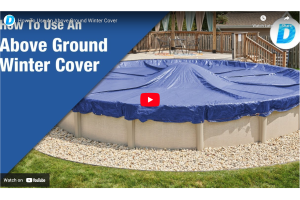How to Pick a Pool Pump Guide
HOW TO PICK A POOL PUMP
For a first time pool owner, shopping for a pool pump can be a very daunting task. With terms to memorize and items to consider, it’s no wonder that many of us end up at the mercy of the local pool maintenance guy or pool shop. In order to level the playing field as you work to find out just what you need and what you don’t, we’ve put together some helpful information on how to find the best pool pump for your needs.
What Is A Pool Pump?
Before you begin the process of choosing a pool pump, it is helpful to understand what a pool pump is, and what its function is in the pool. Often called “the heart of the swimming pool,” a pool pump circulates water through your pool, just like your heart pumps blood through your body. Without proper circulation, pool water cannot be properly cleaned and filtered, resulting in dirty, stagnant pool water that is unsafe for swimming.
A pool pump works by using an electric motor to spin an impeller, or turbine, inside an airtight housing. This creates suction, pulling water from the pool, forcing it through the pool’s filtration system, and pushing it back out into the swimming pool. The pipe leading into the pump is called the influent line, while the hose or pipe leading out of the pump and back into the pool is called the effluent line.
Beginner's Guide to Pool Pumps
Additional Considerations -
Self-Priming vs. Non Self-Priming Pumps
The term self-priming refers to a pool pump that has the ability to lift water vertically from the pool. If you have an inground pool, you need a self-priming pool pump because your pump will sit above the pool’s waterline. If you have an above ground pool, you usually can use a pump that is not self-priming and relies on gravity to pull the water from the pool. In cases where an above ground pool pump sits above the waterline, a self-priming, inground pool pump can be used.
What Size Pool Pump Do I Need?
When selecting a pool pump for your pool, bigger is not always better. A high horsepower pump that’s too large for your pool’s capacity will just run up your energy bills without maximizing efficiency, while a pool pump that isn’t powerful enough will work too hard, also causing an increase in your electricity bills.
There are two key elements that play into determining what size pool pump will best work for your system: ‘flow rate’ and ‘head.' Flow rate refers to the water quantity that can move in a certain time frame and is measured in gallons-per-minute (GPM). The term head refers to the amount of resistance to flow that exists in your pool plumbing system. Head is usually measured in ‘feet of resistance’ or ‘feet of head.’ The items in your circulation system (such as a heater, automatic pool chemical feeder, etc.), as well as the number of bends in your piping, size of piping, and distance the water must travel, all play a role in determining the total head.
Pump manufacturers provide details related to flow rates and head that can help you determine which pool pump you need. It’s also important to keep in mind that these two calculations are not independent of each other. Your determined/desired flow rate will play a part in determining your head, as many elements within a pool’s plumbing loop offer different levels of head depending on how much water you’re trying to pass through at any given moment.
Calculating Flow Rate: To calculate flow rate, you first need to determine your desired turnover rate, or how often your pump filters the amount of water that is equivalent to the total amount of water in your pool. We recommend that your pool has at least 1-2 turnovers a day with a turnover time of about 5 hours. The steps below will help you calculate your flow rate.
- Determine your pool capacity.
- Divide the number of gallons of water in your pool by the number of hours you want per turnover. Then divide this number by 60 to determine your required flow rate per minute (GPM).
(Pool capacity in gallons/desired turnover rate in hours)/60=Flow rate in GPM.
Example: If you have a 20,000 gallon pool and a desired turnover rate of 5 hours, your desired flow rate would be: (20,000/5) = 4,000 gallons per hour/60 = 66.66 GPM, or approximately 67 GPM.
Calculating Head: As mentioned above, your total head consists of a variety of factors and is actually broken into multiple parts, as head has a dynamic component to it. These calculations can become very complex quickly. There is no need to worry; there are a few tips for estimating the total head. Please note: to estimate the feet of head below, courser filters allow for lower-end estimations.
- Determine the amount of pipe between the pump and pool return. This is your starting feet of head. If you use a filter, cut this number in half. If your return line pipe size (diameter) changes (reduced diameter), determine the percentage change and add that to your calculation (20 feet of pipe that connects to a 50% smaller diameter pipe adds 10 feet of head). 90-degree turns in piping add around 1-2 feet of head.
- Other items connected to your pool plumbing might factor into this measurement and can usually add around 2-12 feet of head. Sometimes instruction manuals for these products will tell you how much resistance is available depending on your flow rate. If you have that information or can contact a manufacturer, you will have an accurate estimation. For each foot below the water surface your return line is, add 1 foot of head to your calculation.
Match Your Pool Pump To Your Filter
A common mistake that pool owners make is mismatching their pool filter and their pool pump. This results in inefficient pool circulation and filtration. To make sure that you pair the correct filter and pump, do not choose a pool pump with a higher flow rate than your filter. Ideally, the inlet/outlet pipe size on both units should be the same. For example, use a pump with a 2-inch inlet/outlet and a filter with a 2-inch inlet/outlet for optimal performance.
Multiple Speed vs. Single Speed Pumps
The final variable to consider in choosing a pool pump is whether you want a single speed, dual speed, or variable speed pump. Single-speed pumps are the most affordable option, but they are not nearly as energy efficient. Dual speed and variable speed pumps cost more money upfront but they will really help to cut back on your energy costs. Be aware that some states require that new and replacement pumps over 1hp be either dual-speed or variable speed in order to help cut back on energy usage.
With a little research and some expert advice, it is easy to navigate our wide selection of pool pumps. With the right pump, your pool will operate more efficiently, saving you time and money. If you still aren’t sure which pump is right for you, give us a call at 800-574-7665 or visit us online at doheny.com. Our experts will be happy to help with any of your questions or concerns.
Read related articles:






